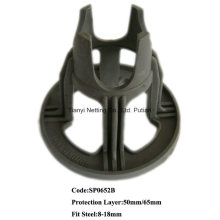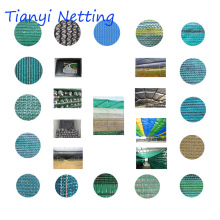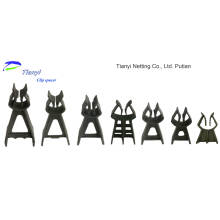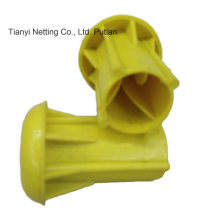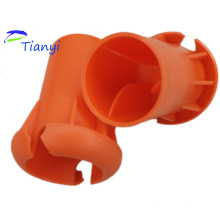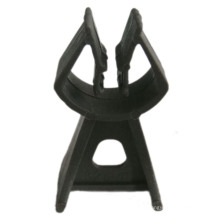Rapid propagation of olive seedlings
2021-05-09
1. Collect the seeds. The fruit of olives is divided into the “fruit of tender fruits”, “green fruits of vole fruit”, “fruit of autumn fruits” and “fruit of winter fruits”. The seeds used for seedling propagation are "Dongziqingguo", also known as "winter fruit" and "Shuihuo". Fruits are harvested 10 to 20 days after the start of winter, and the flesh can be removed by stacking for several days until the fleshy and pericarp are rotted naturally, or after being packed in bags for several days, put into the tank and soaked in water at 7 to 10°C. After 3 days, the seeds were removed, washed and dried, and then stratified. The seeds were sown from late February to mid-March.
2. Germination sowing. 1 nursery time. The seeds and shells of olive seeds are hard and not easily broken. Soaking and germination treatments are required before sowing. The seeds collected in the previous year were treated between "Lichun" and "rainwater." For ease of management, the width of the germination sand bed is generally between 1 and 1.5 meters, and the sedimentation height is 10 to 1.5 centimeters. This is beneficial to the resistance of seed germs, promote lateral root growth, and improve the survival rate of milking.
2 soak germination. After washing the seeds with water, remove the unfilled and diseased seeds and damaged seeds, soak them in warm water at 30-40°C for 1 to 2 days to help the hard shells to crack, make the embryos fully absorb water, germinate early and increase the germination. rate. When soaking, it is necessary to stir constantly, change the water once a day, so as to avoid embryo damage due to lack of oxygen. During germination, the seeds are laid on the sand bed side by side, so that the three sutures of the green kernel are parallel to the ground, so as to facilitate the smooth growth of the radicle and the germ, and no bending occurs. When planting, the depth should be shallow. Just cover the seed with sand, and then spray water to maintain the humidity up to 80% to promote seed germination.
3 breast milk row. The main roots of olive seedlings are well-developed, with few lateral roots and high tannin content. Transplanting large seedlings is not easy to survive. Seedlings are transplanted on the production, commonly known as milk seedlings. That is, when the seed is unearthed and the true leaves grow, there are about 2 to 3 centimeters when the seedlings are planted in the seedlings. The seeds are polyembryonic, and one seed will produce 1 to 3 milks, and most of them are 2 to 3 independent milkings, which need to be planted in order to reduce the seed use and reduce the cost.
1 Slough preparation. Olive seedlings afraid of frost, avoid water, seedlings should be selected open topography is not easy to accumulate cold air, drainage is convenient, sandy soil loose soil. The seedlings are finished in a low-lying teapot shape with a width of 1 meter and a width of 40 centimeters, which is conducive to moisturizing and fertilizing water. After the car is opened, 100 kg of multi-effect fertilizer, 80 kg of phosphate fertilizer and mud are mixed evenly, and the surface is covered with a mulch after the whole surface is thinned to prevent weed growth and soil compaction and maintain soil moisture.
2 Germ standard when rowing. Until the milk grows about 3 to 5 centimeters, the true leaves are planted before turning green. At this time, the main roots and fibrous roots are not well-developed, and the best survival rate for transplanting is also the key to achieving Miao-Qi Miao.
3 rowing density and methods. In order to make full use of the land and to facilitate the management of weeding and grafting, it is appropriate to plant rows with a spacing of 20 cm and 20 cm. Germination takes about 1 month until the milk grows to 3 to 5 centimeters in length, and a qualified nursery is selected to be transplanted in the seedlings, which means that it is planted. When rowing, it is required to preserve the main root, not to damage the main root, the roots of the fibrous roots must be affixed to the sand, and the true leaves of each piece should be cut off to two thirds. Immediately after planting, the root water should be sprayed and the survival rate can be as high as 90% or more. The survival rate is extremely low. After row planting, strengthen field management, set up shading nets or shady shades according to weather conditions; shading in dry weather in summer and autumn, timely irrigation and drought relief; do a good job of drainage work in rainy season; cover the small light shed in late October to early November To ensure safe wintering of olive seedlings.
4. Fertilizer management. 1 seed germination and water management. During the pregermination stage of indoor sand beds, the seed embryos are rich in their own nutrition and do not need to be fertilized. However, the seed core and shell are hard, not easy to break, and need to absorb a large amount of water to help the hard shell crack, make the embryo fully absorb water, germinate early and increase the germination rate, and the river sand has poor water conservation, and the water should be sprayed once every morning. Keep the sand bed humidity up to 80% until the row is planted.
2 after the row of fertilizer management. About two months after the larvae are transplanted, the roots begin to grow and they need to absorb nutrients from the outside. At this time, foliar fertilizers such as Yunda 120 can be sprayed once, and the leaves are sprayed once a month. Fertilizer and application of a thin dung water, to October into the garbage or pig manure as a base fertilizer to meet the normal growth of seedlings need a lot of nutrition.
Olive Netting is high quality Olive Nets for farmers to collect olives, vegetable or other fruits easily without damage, so more oil and better quality can get from olive harvest. Olive Tree Harvest Nets is widely used in the farm and agricultural area The Olive net Also is put on the ground and kept still with clods of earth, stones etc...It can also be hung off the ground on poles. Olive net main export market has Asia, Middle East,Australasia, Central/South America,Europe,Africa,North America..And we have over 300 Workers ,20 Set machine ,professional designer,ISO 9001 ,So We can meet the different needs of our customers .
Virgin Olive Net, Olive Collect Netting, Olive Falling Nets, Olive Collection Net
Chain Link Fence Co., Ltd. http://www.penettings.com
